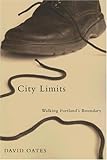What's the correct vision for the best city? Is it endless expanses of detached single family homes, each with their own yard? Or is it walkable urban places, with stores and shops and interesting things within walking distance? That's the question explored in the movie, Portland: Quest for the Livable City.
The setting is Portland Oregon, a well known Mecca for hip urban living, coffee shops galore, an excellent mass transit system, and a lampoon able cultural style. Decades ago Oregon established a system of urban growth boundaries, with the effect of containing city growth and preserving rural land. This along with smart growth city planning has resulted in a lively city with enough population density to make mass transit viable, and useful.
But not all is rosy in Portlandia. The movie depicts many sides of the debate over visions of appropriate land use. On the one hand you have people who are enjoying the quality of life within Portland. On the other hand there are many for whom it does not work out so well.
Consider the plight of the farmer whose land borders Portlands urban growth boundary. Their land, because it can only be used for farming, would sell at $4000 per acre, but across the street where it's allowed to be developed for housing, the land is worth much more, maybe $100,000 per acre. One might be bitter about the accident of where the line is drawn.
Consider those who want to drive, and who don't appreciate roadblocks meant to discourage their supposed god given right to drive everywhere they want. They might not appreciate streets blocked up by bicycles and light rail.
How does one weigh the needs of the common good against individual rights?
An individual right of land ownership is to seek the highest value possible for that land. But that is what's caused housing developments to sprawl into wide ranging suburbia where we are trapped into having to drive everywhere. In the "common good", sprawl is bad because it forces upon all of us the blight of highways and parking lots, increased air pollution and gridlock, and sedentary living where we drive everywhere instead of walking or biking. Sedentary lifestyles and the air pollution results in higher health problems.
An individual right of car ownership is to drive anywhere you want, anywhere you want, and to go as far as the gasoline will take you. But the highway/car oriented development pattern prevents our streets from being used for all purposes. The presence of cars make life more dangerous for pedestrians and bicyclists, and preferring cars over mass transit dooms us to gridlock.
What's the balance between common good and individual rights?
The movie has an amazing range of voices from all sides of this debate. It is an excellent movie covering issues of land use practices and policies. While that may sound like a snoozer, the movie is anything but boring.
 The movie highlights a book, City Limits: Walking Portland's Boundary. The author walked the entire Urban Growth Boundary line of Portland, and wrote about what he found. His thoughts add a lot to the movie.
The movie highlights a book, City Limits: Walking Portland's Boundary. The author walked the entire Urban Growth Boundary line of Portland, and wrote about what he found. His thoughts add a lot to the movie.
The movie is part of the Making Sense of Place Film Series linked below.
